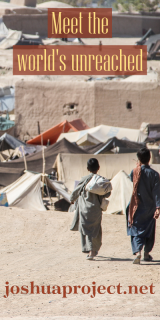Raising Local Resources
A Dormitory in Rural Africa?

Recently an appeal for funds came across my desk and caught my attention. It was an appeal to help build a girls’ dormitory in a rural part of Africa. Obviously girls need an education, and they need a place to stay while they study, especially if their homes are far away from the school. Who could oppose raising funds in America for such a worthy project?
First of all, the appeal stated that the girls currently need to find housing in nearby villages with relatives or others willing to take them in. Unfortunately, this has led to various forms of abuse, including sexual abuse, and being forced to work for the host family when the girls should be in class or studying. Teenage pregnancies are forcing some to leave school, perhaps never again to have the opportunity to finish their schooling. The appeal for funds said the dormitory was necessary so that the girls can be “safe” from the evil in the surrounding villages.
As I read it, the appeal made me sad because I had some personal knowledge of that area of Africa. The gospel has been preached in that area for over 100 years. In the early days, mission stations were established as places where local people who wanted to follow Christ could find a safe haven, away from the “sinful atmosphere” of the surrounding villages. So, the idea that the school dormitory would be a safe haven is not new. Interestingly, one of the facts of life is that young girls, despite the “safety” of school dormitories, can still get pregnant out of wedlock.
What grieved me most is the implication that after 100 years of preaching the gospel in that area, the villages are still not safe places for these girls to live! What does this say about the nature of the gospel that was preached—that local populations cannot be trusted not to prey on teenage girls? It is quite possible that the men violating these young girls attended mission-related primary
and secondary schools themselves. Why has the gospel not brought deep spiritual transformation? Should they not, after 100 years, display a level of morality that makes their villages safe places for young girls to live?
If there has not been an effective level of transformation in the hearts and minds of the villagers, will building a dormitory on the secondary school compound solve the problem in the long term? Or does this lack of spiritual transformation point to the inadequacy of Western-style education, which may leave the mind improved but the heart wanting?
About 40 years ago some anthropological research was done in East Africa on the spirituality of those who attended four years of secondary school. It was discovered that those about to finish four years of secondary education were more likely to be committed to an animistic paradigm than when they entered the program four years earlier. The explanation was that the nearer the students got to graduation (anticipating the adult world), the more likely they were to take the non-Christian paradigm seriously, indicating that many of them lacked a deep personal relationship with the Lord. To them, Christianity did not seem to have the answers for “adult” questions, perhaps because for them it was formed, incubated and developed in a Western-style educational environment that often denied the realities of the “spirit” world.
In a situation such as this, where compassionate Christians want to provide shelter for young women, what could possibly be a workable alternative? The alternative is to present a gospel that does not extract people from the real life of traditional villages, but finds a way of dealing with the spiritual issues faced in the villages where the young women are seeking accommodation. This, of course, needs to be addressed in the long term. The need for the dormitory represents a more urgent and short-term solution.
How can sinful villages be transformed? Western-style education is definitely not adequate to deal with the realities of the spirit world in which most of these young people live their lives. The only viable solution is to present the gospel—within the villages themselves—in such a way that the kingdom of God and the power of His transforming grace can be extended over the villages, so they can become safe places for everyone to live. When that happens, the village no longer needs to be a place of evil but a place where God’s transforming grace is seen on a daily basis. Those same villages can become places where adult men and women will create a safe place for their children, youth, and all residents and visitors who are seeking shelter.
In short, the long-term hope for the Christian church in rural Africa or anywhere else is not extraction from but transformation of the village. A life-changing experience with the Holy Spirit, combined with biblical teaching and an emphasis on holy living, can turn sinful villages into places where spiritual men and women will care for and disciple their youth.
And when it comes to mobilizing local resources, think of it this way: if villages are safe places for young women to live, foreign funding for dormitories will not be needed. In fact, if local people deem such dormitories to be necessary—and they take psychological ownership of the school—they may even make and burn the bricks to build the buildings! If that were to happen, the appeal letter can be sent to the local people capable of making and burning the bricks without appealing overseas for funding. People in Africa deserve the blessing of doing such things for themselves.









comments